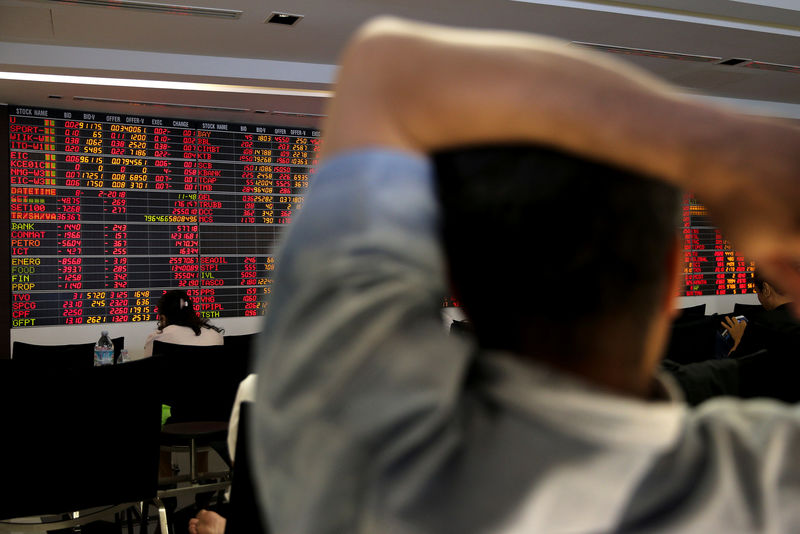By Ritvik Carvalho
LONDON (Reuters) - A stock market drop triggered last week by a sharp rise in U.S. bond yields has snowballed into a global selloff and wiped $4 trillion off market capitalisation worldwide.
While the S&P 500 (SPX) recorded its biggest daily drop in over six years on Monday, the biggest eye-catcher has been the spike in volatility, with Wall Street's "fear gauge" hitting highs not seen since August 2015 (VIX), when fears of a slowdown in China rattled global stock markets.
Does this represent a turning point in the global equity bull run, or merely a shift from a low-volatility to high-volatility regime? Here are seven charts that put this move and the spike in volatility in context.
VOLATILITY UNCORKED
Graphic: http://reut.rs/2BG8RlH
The S&P 500 index recorded its biggest daily drop in over six years on Monday, and the VIX index shot up to its highest level since August 2015, breaking out of a historically low range. As the following chart shows, the drop that followed across the globe wiped out $4 trillion in world stock market capitalisation, and world stocks have reversed their 2018 gains (MIWO00000PUS).
Graphic: http://reut.rs/2BdJ5Ev
STOCKS AND VOLATILITY
Graphic: http://reut.rs/2BIKcx6
Stocks and volatility tend to be inversely correlated. As the above chart shows, for the most part, the VIX has historically held within one standard deviation of its median. On occasions when it has broken above this mark, stocks have suffered significant drops. Low, or falling volatility regimes on the other hand, have seen significant gains in equities as investors have used such times to add exposure to risky assets.
BIGGEST TWO-DAY SPIKES IN THE VIX
Graphic: http://reut.rs/2BcxKo6
A historical look at the VIX suggests that spikes such as the ones witnessed on Monday are rare. Since 1990, there have been only eight occasions on which the VIX has risen more than 50 percent on a two-day percentage change basis. The last time such a rise was witnessed was during the August 2015 stocks selloff that followed a surprise move by China to devalue its currency.
SPILLOVER EFFECTS
Market reaction to VIX spikes: http://reut.rs/2Bcyz0a
Market reactions to spikes in volatility have mostly tended to mirror "risk off" moves, with lower stocks and lower bond yields. The following graphic shows how markets have reacted since the selloff began on Feb. 1.
Global sell-off since Feb. 1: http://reut.rs/2BfeypW
Currency markets in particular, have largely remained unaffected by Monday's market moves, with traditional safe havens such as the Japanese yen
Valentin Marinov, head of G10 FX Strategy at Credit Agricole (PA:CAGR), said he and his team had spent Tuesday morning analysing why the foreign exchange moves had not been wilder.
He said he believed the relatively smaller role of platforms like exchange traded funds versus stock markets had ensured better liquidity was available and held back rising volatility in foreign exchange markets.
FX: safe havens benefit, volatility rises: http://reut.rs/2BHM5tA
